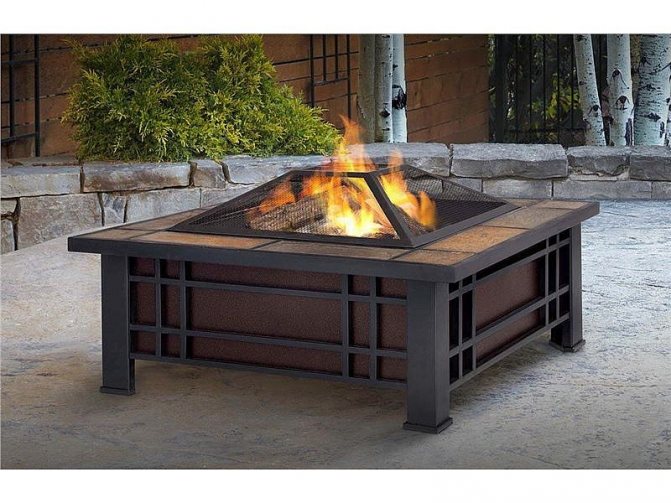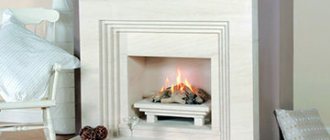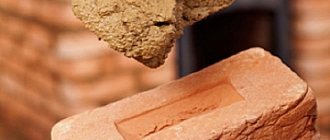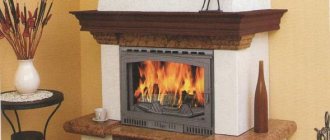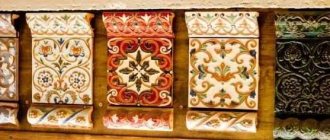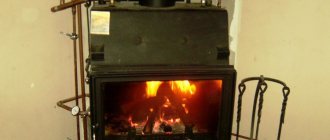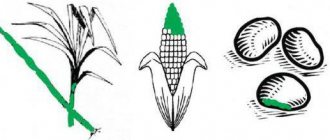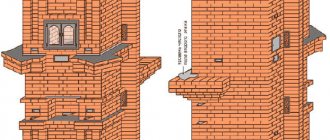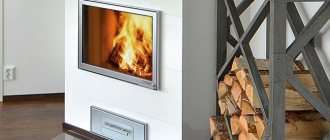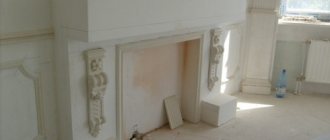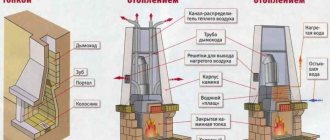A metal fireplace is an excellent alternative to other heating devices. The fireplace can easily cope with the task of heating a country house or a separate room. The originality of the device and its appearance will add an extraordinary flavor to the decor of the room. You can install either a homemade metal fireplace or a factory-made device. The fireplace can be used for heating purposes and can be installed in the garden as an outdoor fireplace. If you have welding skills, it is easy to make a metal fireplace with your own hands.
Advantages and disadvantages of a metal fireplace
Metal fireplace
The fireplace most often uses dry wood as fuel, sometimes coal and pellets. It is recommended to use firewood other than coniferous wood. Coniferous wood has a high content of resinous components; they can be deposited on the walls of the firebox and the inner surface of the chimney. Cleaning such deposits is an inconvenient and time-consuming process. The best option is to use birch or aspen firewood. Frequent use of coal is not recommended - coal burns at a very high temperature, this can cause deformation of the metal and rapid burning of the grate. Unlike an electric fireplace, a steel fireplace is completely energy independent - in the absence of electrical energy, the device can perform its function. The following main advantages of a metal stove-fireplace can be identified:
- Mobility – the device can be easily moved to another room;
- High speed of indoor air heating;
- Ease of manufacture and installation;
- High efficiency;
- Easy to maintain and operate.
In addition to the advantages, a metal fireplace, most often used for heating a summer house, has minor disadvantages:
- Low inertness – the fireplace cools down quickly;
- The surface of the device has a high temperature - there is a risk of getting a burn when touched;
- High level of fire danger.
What fuel should I use?
As practice shows, there is nothing better fuel than (dry) firewood. Ideal species are oak, aspen, and ash. Such logs burn for a long time, so you can thoroughly enjoy the dancing of the flames and the warmth emanating from them. Also suitable for metal boilers are pellets - compressed wood waste. They are loaded into the firebox in the required quantity (depending on the size of the heating device), and the heating intensity is adjusted using a manual control unit.
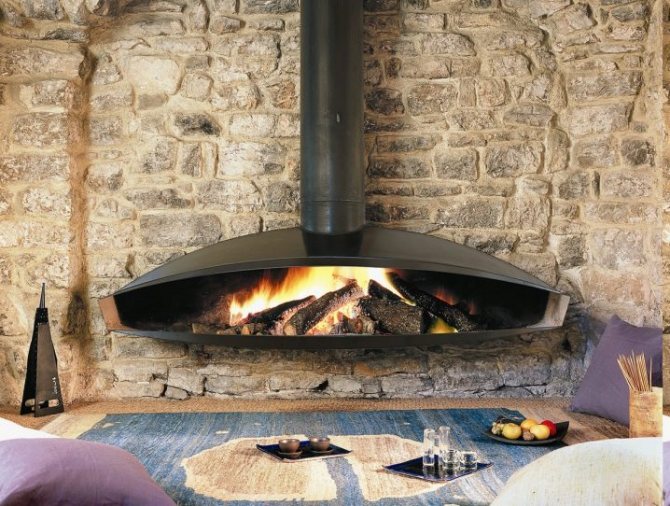
Conifers produce a lot of soot, so stove makers do not recommend using them as fuel. And birch trees have high heat transfer, so thanks to them you can quickly warm up the room to the desired temperature.
Also, some models of iron units run on gas. Such devices are safer, but it is impossible to make them yourself.
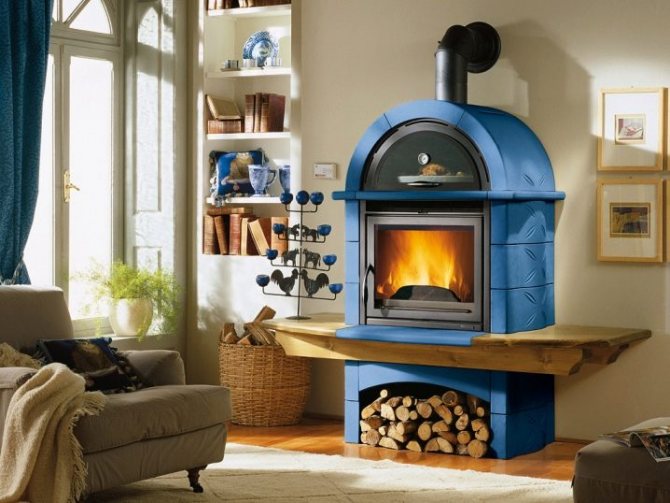
Features of the location of a metal fireplace

The heating device is recommended to be located in rooms with free air flow. The combustion process requires a significant amount of air. In addition, the combustion process uses a large volume of air - this can cause suffocation.
Steel fireplaces have different geometric sizes and configurations. Among the placement methods, the main ones are the following:
- Wall;
- Angular;
- Central;
- Built-in;
- Mounted.
When choosing a location, it is necessary to take into account the possibilities of installing the chimney. According to this criterion, the wall location is optimal; the central location of the product is not particularly convenient in this regard.
When installing a fireplace, it is necessary to take into account and implement fire safety measures. For this purpose, building structures located close to the fireplace are shielded with fireproof materials with low thermal conductivity.
Advantages
Japan is considered the birthplace of metal fireplaces, although in a simplified version it strongly resembles the domestic “potbelly stove”. Here we are talking about the fact that the original shapes of metal fireplaces came to us from the Land of the Rising Sun, especially for island options. From the above it follows that one of the advantages of fireplaces of this type is the arbitrariness of the style for decorating any room.
The absence of foundation requirements allows you to think about arranging metal structures after the construction of the house. The product can be installed anywhere in a finished and finished room. Mobility allows for re-installation with a change in the location of the outbreak.
A very big disadvantage of wood-burning fireplaces is that a significant part of the amount of heat leaves the room through the chimney. An increase in efficiency is only possible due to the rapid removal of heat from the firebox.
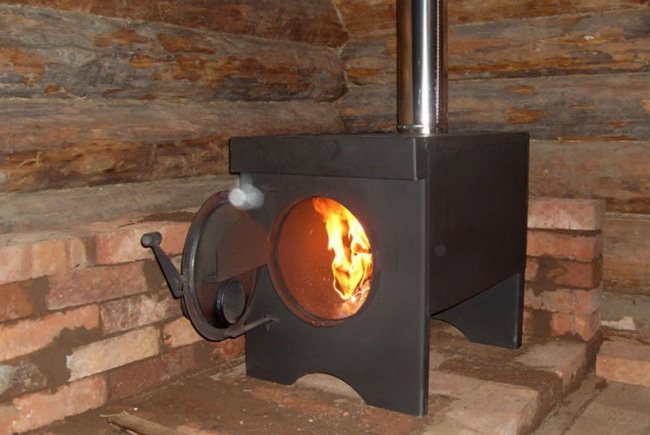
Any metal has excellent thermal conductivity, so it will heat up soon after igniting the wood. The transfer of energy to the air in the room occurs at a much higher speed than in the case of a fireplace built of brick. However, this plus easily turns into a minus when the wood is completely burned. The fireplace cools down very quickly and does not accumulate heat.
Materials for production

To make a metal fireplace, you will need the following materials:
- A metal sheet with a thickness of at least 4 mm - when heated, thinner metal may deform;
- Pipe for making a chimney, steel bends of the appropriate diameter;
- Grate;
- Fastening accessories;
- Door – made of solid metal or with fire-resistant glass, hinges;
- Legs, corner, channel;
- Thermal insulation materials;
- Mushroom for chimney, head;
- Facing materials, decorative elements (optional).
For DIY installation you will need a welding machine, an angle grinder (grinder), a hammer, a drill, a screwdriver, pliers, and a measuring tool. Metal fireplaces are sometimes lined with brick - this significantly increases the heat retention time. For this type of work you will need appropriate materials and tools - brick, concrete mortar, trowel, spatula, and so on.
Chimney from a pipe
Having made a metal fireplace with your own hands, you can proceed to an equally important stage - preparing the chimney. It does not require welding work. It is recommended to use ready-made steel pipe.
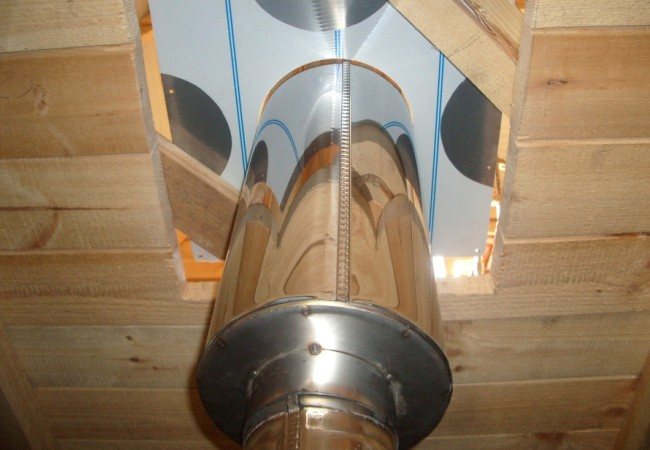
The pipes are joined using the provided socket. This is a special extension that allows you to insert one end of the pipe into the other. If there is no such socket, then the edge of the pipe should be cut with metal scissors, and the junction of the pipes should be treated with heat-resistant sealant.
A direct-flow duct is not a mandatory requirement for a chimney for metal fireplaces. Various elbows can be used to direct the smoke along the desired path.
When passing through ceilings, you will definitely have to take care of safety by insulating the chimney. Asbestos material or mineral wool are suitable for this. This procedure is also expected when the pipe exits the roof.

The top of the pipe is covered with a canopy. It will prevent precipitation from getting inside the pipe and will protect against excess debris, and will also prevent sparks from flying out.
Installation diagram and manufacturing stages
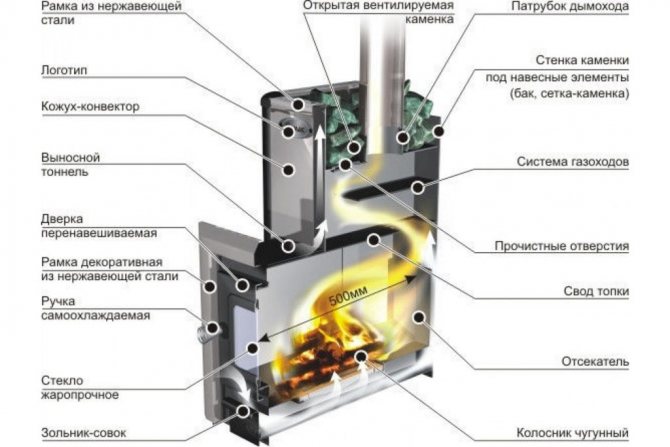
To make a fireplace with your own hands, follow the installation diagram. The drawing indicates the dimensions of future furnace elements. According to the drawing data, at the initial stage the main metal elements are cut. To do this, use a grinder. Using a gas cutter produces sheets with uneven edges - they will have to be finished with a grinder and leveled.
Installation begins with preparing the installation site. A metal fireplace does not require the construction of a foundation; it is enough to level the surface and insulate the floor surface from fire. Insulation is carried out in any case, regardless of the material of manufacture. This type of work is carried out because burning wood may fall out of the fireplace - this can damage the floor covering.
After this, the walls around the installation site are shielded. The best option is to lay ceramic tiles - they are easy to care for, and their surface can be easily washed off soot. The shielding material must have high fire resistance.
Next, a stand for the combustion chamber is made. It is welded from a channel or a metal corner. The frame is covered with a sheet of metal, and legs or supports are welded to it. The frame must be highly stable to prevent the fireplace from tipping over.
The next stage is the manufacture of the firebox and enclosing frame. The side, bottom and top sheets of the combustion chamber walls are welded together, and the end sheets (except for the front) are welded. Before this, one or two partitions of incomplete profile are welded in the upper part of the chamber. The stepwise pattern of smoke movement will reduce heat loss with flue gases. This increases the fuel efficiency and efficiency of a metal fireplace.
After the partitions, a grate is installed in the lower third - it will divide the chamber into a firebox and an ash pan. The grille is installed on corners welded to the side walls and should be easily removable for replacement and cleaning. A window for the door is cut in the front sheet, and the sheet is welded to the firebox. The door hinges are installed and the door is installed.
The finished structure is scalded with a steel screen. The screen will increase the inertness of the fireplace and protect it from the hot surfaces of the firebox. A hole for the chimney is cut in the upper part. Facing and decorative elements are installed (optional).
Peculiarities
A metal fireplace is an excellent device that can heat a room and relieve you of the cold. The heat output of such a stove depends on the level of preheating and the amount of firewood inside. A metal fireplace, thanks to its special qualities, will not let you freeze even in the winter cold. Another advantage of this stove is the ability to make it an elegant addition to your interior. Thanks to its varied design, it will fit into any room of any stylistic direction.
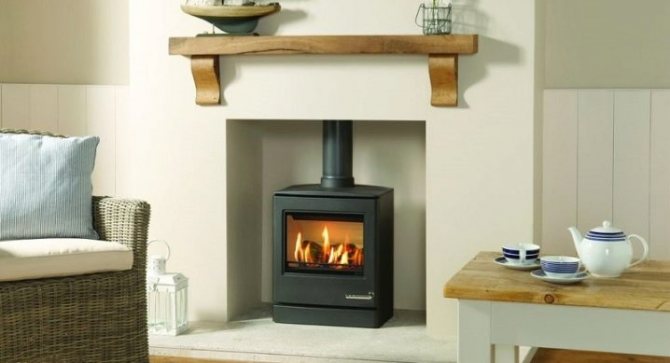
A metal fireplace is considered an invention of the Land of the Rising Sun. The Japanese have always been considered very practical, wise people with a high sense of style and the ability to competently decorate their homes.
This heating product is the full embodiment of all the qualities of its authors; it is light in weight, especially in comparison with its stone counterpart, and is easy to carry from room to room, as well as dismantled. Due to its lightweight design, a metal fireplace does not require an additional foundation, which will allow you to save a considerable amount.
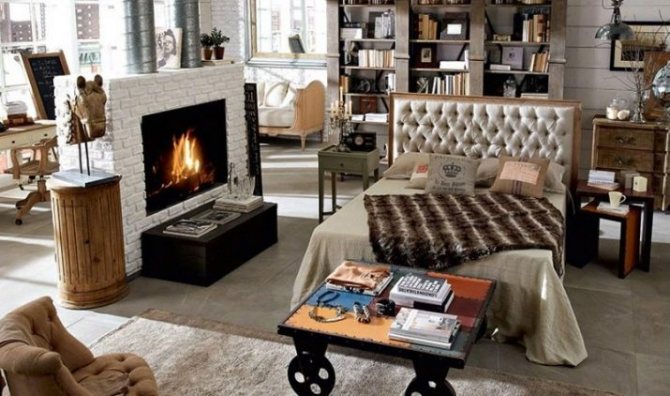
Such a unit is very easy to operate, even a person who has not had anything to do with a fireplace can handle it, but at the same time it also has a high efficiency. It gives off a lot of heat and will be able to heat the room at the required level, even if there is very little firewood inside. It heats up very quickly, so it is considered economical not only in terms of fuel consumption, but also time.
A huge advantage of a metal fireplace, which will delight housewives, is its ease of maintenance. They are easy to clean, and with regular care they will not lose their original appearance. During cleaning, it will be enough to clean off all the soot from the inside and outside, wipe with a damp cloth and lightly polish to give additional shine. As a rule, the above actions do not require any special means; you can clean everything with improvised means that are found in every home: soda, vinegar or citric acid. If desired, purchase special household chemicals for cleaning fireplaces, which are presented in household stores.

However, in addition to a large number of advantages, metal stoves for the home also have a number of features that should be taken into account before purchasing. Perhaps the most important disadvantage of such a fireplace is the increased fire hazard - if used improperly, the fire can spread to other objects.
Another disadvantage is the very rapid cooling of the unit after all the wood has burned out, unlike a fireplace stove, which continues to produce heat even after the fuel has burned out. The fireplace body gets very hot and can cause severe burns if touched carelessly, so it is strongly recommended to wear special thick gloves when working with it.
One of the features of such a unit is the uneven distribution of heat, that is, it can be very hot near the firebox itself, while on the opposite side of the room it is cooler.
There are classifications of metal fireplaces based on material and installation method. Let's look at each one separately.
Based on the material, furnaces are divided into those made entirely of metal and those combined of two types. One of these is a fireplace with a brick body and a metal firebox. Despite the lack of popularity of this type, it is very practical and combines all the advantages of both types. The classic appearance of the wood-burning unit will look great in any interior, and with careful installation you can save on its finishing, since brickwork is very fashionable now.
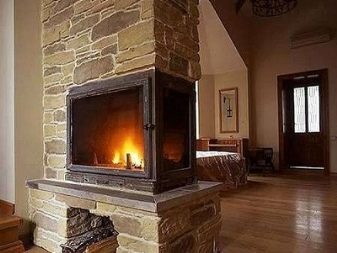
The metal firebox, in turn, increases the efficiency of the unit by heating the material, which turns into an independent heat source. In addition to all the other advantages, the principle of slow burning should also be noted, which allows you to save on fuel, since the firewood will burn out more slowly and give off more heat.
The second type is an all-metal stove , which can be used without any preliminary work. This option with a firewood rack is considered the best option for a Russian dacha or country house, since it does not require a foundation and can be easily moved. The chimney is easily masked using cladding. You can use any material for it. However, when finishing the body itself, you should use exclusively heat-resistant materials.
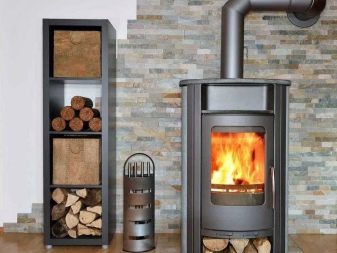
Metal fireplaces with a wood burner have another classification.
The first type is wall-mounted , which involves installation against a straight wall. As a rule, it is located in the middle of the room to distribute heat evenly. If previously such fireplaces had to be faced in a special way in order to fit correctly into the interior, today stores offer a wide range, among which you can find a stove for any room.
The second type is angular. It is considered more practical for small rooms, as it saves space due to installation in the corner.
Another interesting option is a hanging fireplace. It will give the room a zest and a more interesting look. This unit is installed in a special way. You should pay attention to the location of the firebox, which for safety reasons should not be adjacent to the wall.
Chimney device
To install a chimney, a steel pipe with a diameter of at least 200 mm and a wall thickness of 2.5 mm is usually used. Sometimes modern modular chimneys made of stainless steel, made as a sandwich panel, are used for this purpose.
The steel chimney is mounted using electric arc welding. Rotations of the smoke duct are realized by using steel bends of the appropriate diameter. During installation, it is recommended to minimize the number of turns. A large number of turns worsens the quality of traction. Passages through building structures are sealed with fireproof materials (basalt wool and other materials with similar properties). Transit areas passing through the attic are also recommended to be insulated with fireproof materials.
A cap and a fungus are mounted on the top of the chimney to protect it from precipitation.
Rules of operation and care
A metal fireplace is quite easy to use and does not require special care. During operation, the main thing is to comply with fire safety measures - to avoid falling out of burning fuel, and so on. When servicing the fireplace, you must be careful not to touch the walls of the product. It is recommended to wear cloth gloves when loading fuel and opening the door.
To maintain the device, you need to regularly clean the firebox and chimney from soot. The overgrowing of the chimney with soot will worsen the natural draft - this can lead to smoke entering the room. Also, you should not wet clean the device - this will lead to increased corrosion and the fireplace will take on an unpresentable appearance.
Main varieties
The fireplace, with which the cottage will surely become your favorite place to relax, can be equipped with various functional and useful additions. A barbecue oven allows you to cook not only meat, but also vegetables outdoors. A barbecue for a garden can be either quite massive and initially installed in a specific place, or portable, which in turn allows you to rearrange and move it from place to place, or take it with you on the road. This is especially true if you go out into nature and do not have your own summer cottage.
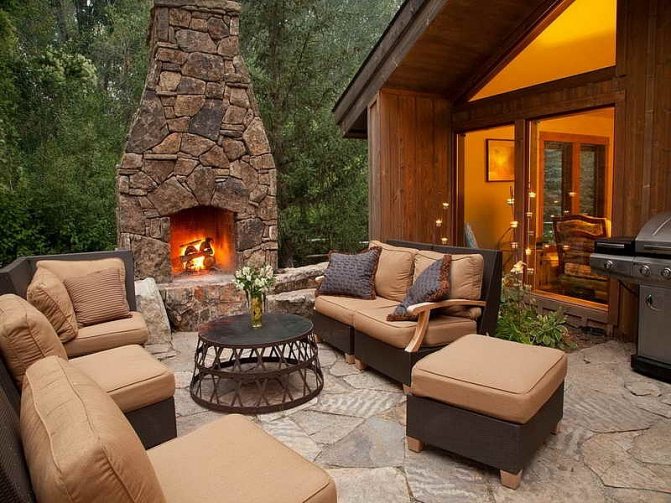
At the barbecue you can cook aromatic shish kebab or simply bake vegetables and meat at your discretion. And if you don’t want to assemble and build a brick fireplace in your garden with your own hands, we recommend that you pay attention to ready-made steel and cast iron barbecue models; among them, models produced by the Weber brand are especially popular. This manufacturer has positive reviews about its products and puts the high quality of garden structures first.
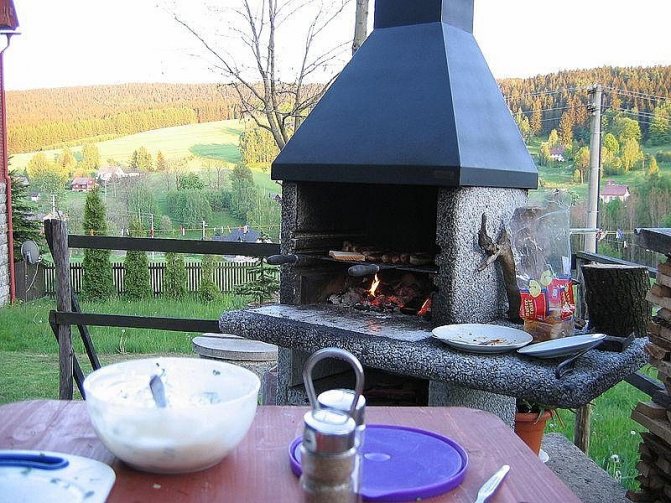
A fireplace, the firebox of which allows you to cook delicious and aromatic food, can be made from various materials. The most inexpensive are steel models; forged barbecues are in a higher price range. Outdoor structures made of ceramics look interesting; they have an attractive design, but at the same time, they must be handled with special care.
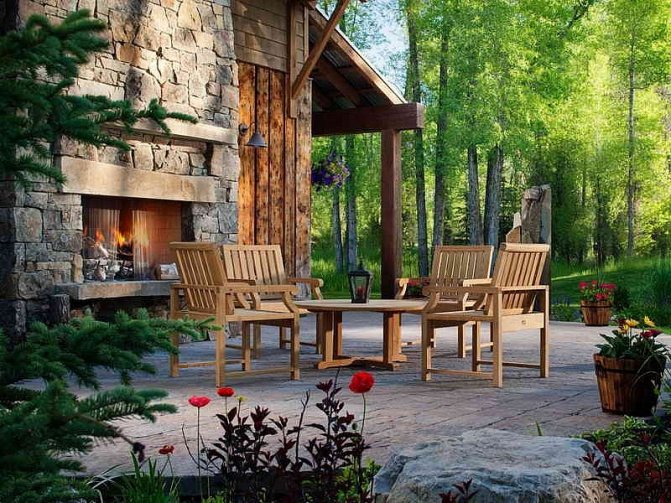
The fireplace, a photo of which you can view in this article, can be not only steel, forged and ceramic, but also cast iron. Cast iron barbecues and garden devices are characterized by durability and good accumulation of thermal energy.
A garden stove can be not only portable, but also stationary. Such structures are bulky and massive; for them it is necessary to select a specific place in the garden and prepare a foundation through which such a stove will gain stability and will not sag. An outdoor stove can be built traditionally from brick. Such models have a lot of advantages and, if necessary and if you have a diagram, you can build them yourself.
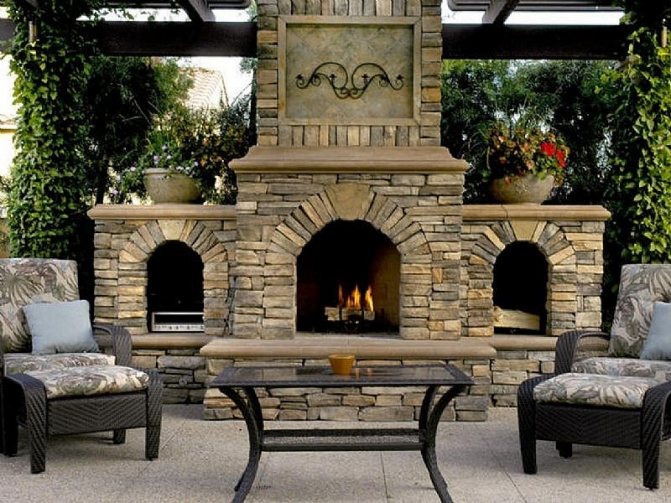
Brick ovens can combine several elements and a fairly large number of functionality: barbecue, grill, oven, cain, barbecue, smokehouse, tandoor, sink. Due to their traditional design, such stoves will make your garden as cozy as possible and make your stay in it comfortable. Just as gourmets say, the most delicious and aromatic food is obtained in brick ovens.
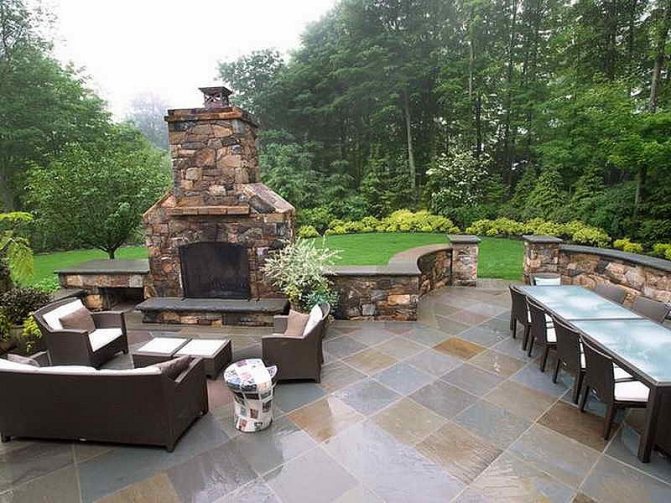
An alternative to brick stoves are metal fireboxes, which can be purchased fully assembled and, if necessary, supplemented with all useful functions and elements. Metal fireplaces do not require special knowledge and experience to install; they are placed in a convenient location and can be used immediately.
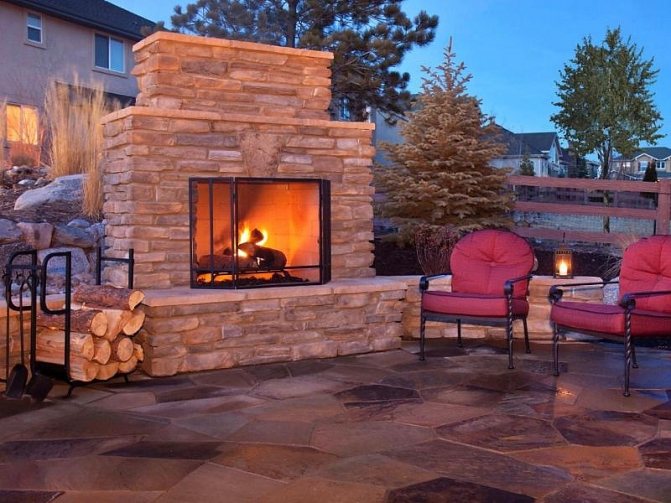
If you prefer smoked meats, you probably know that such products are quite expensive today. That is why it will be much more profitable to smoke meat, lard and fish with your own hands and at home. For these purposes, there are devices such as smokehouses.
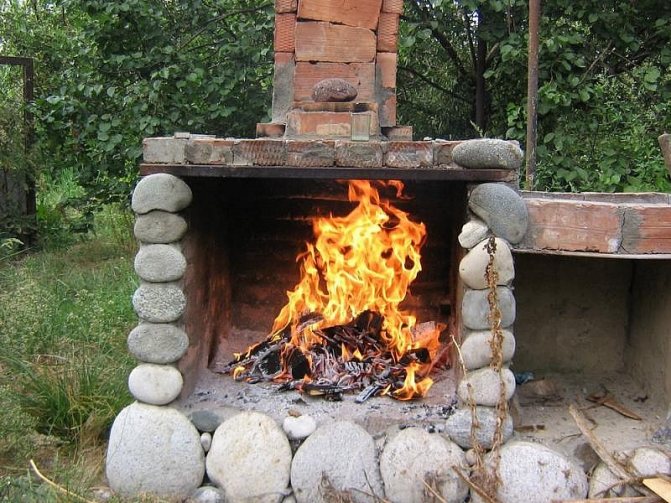
A smokehouse for a garden can be of certain dimensions. A portable unit is suitable for a small family, but it is worth considering that you will not be able to smoke a large amount of food in it.
For mass consumption or for a large family, more capacious stationary smokehouses are suitable. The smoking chamber in such devices is quite spacious and large.

Before purchasing, it is important to consider that there are hot and cold smokers. The main differences lie not only in the final taste of the finished product, but also in the time spent on preparation. Cold smoking units require more time to cook meat or fish. You may need from 2 hours to several days.
